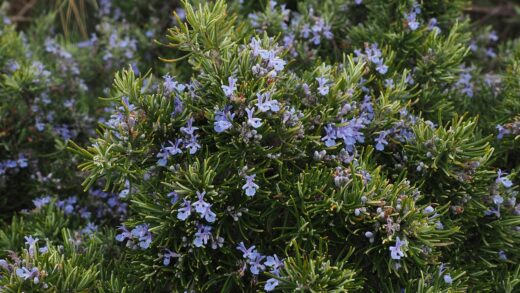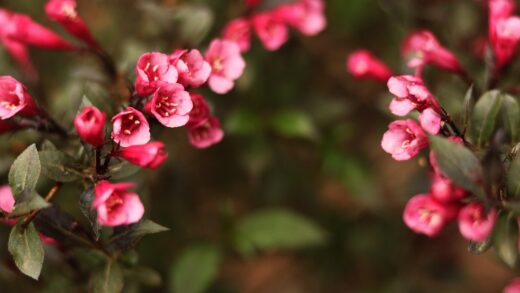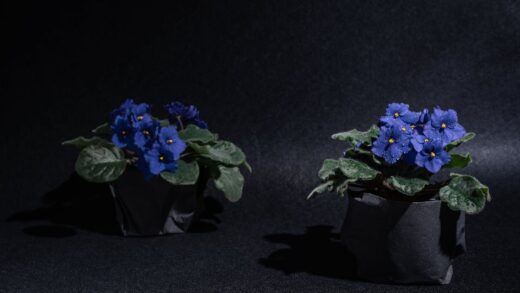The moth orchid, or Phalaenopsis, is one of the most popular houseplants in the world, capable of delighting us with its magnificent flowers several times a year with proper care. However, many are uncertain about its care during the winter period, even though proper wintering is crucial for maintaining the plant’s health and ensuring abundant flowering. This period is not a true dormancy like in deciduous trees, but rather a period of reduced activity, the professional management of which is essential for successfully initiating the next flowering cycle. By applying the correct wintering techniques, we not only ensure the plant’s vitality but also encourage it to develop new flower spikes that will become the ornament of the spring and summer months.
In their natural habitat in the tropical rainforests of Southeast Asia, moth orchids live as epiphytic plants, settling on the branches of trees. In these areas, there are no cold winters like ours; the change of seasons is marked more by subtle fluctuations in light intensity and rainfall. Therefore, “wintering” at home is not about exposure to cold, but about simulating these gentle environmental changes. The most important factor is creating a difference between daytime and nighttime temperatures, which signals the plant to transition from the vegetative stage to the reproductive phase. This carefully controlled process mimics the cycles that occur in nature.
The primary and most spectacular goal of wintering is flower spike induction, that is, stimulating the development of new flowers. This process is most effectively triggered by a moderate drop in temperature for a few weeks, which acts as a form of positive stress on the orchid. The plant responds to this environmental change by redirecting its energy from vegetative growth—developing leaves and roots—to generative growth, which is the production of flowers for reproduction. This is a deeply encoded survival instinct that ensures the species’ continuation before potentially harsher periods.
Successful wintering rests on four pillars: light, temperature, watering, and fertilization. Achieving a harmonious balance of these factors is essential, as they are closely interconnected, and mismanaging any one of them can negatively affect the others. Improper care can not only lead to a lack of flowering but can also cause damage to the plant, such as root rot or weakening of the leaves. In the following, we will detail how to optimize all four factors during the winter months.
Optimizing light conditions during the winter months
One of the most defining changes of the winter period is the decrease in the number of daylight hours and light intensity. This poses a particular challenge for a plant of tropical origin, which is accustomed to abundant, filtered light throughout the year in its natural environment. Phalaenopsis orchids need sufficient brightness even during their rest period to maintain photosynthesis, which is essential for storing energy for later flowering. Persistent lack of light can lead to stunted leaves, a halt in growth, and a complete loss of the will to bloom.
More articles on this topic
Ideal placement is key to ensuring the right amount of light. East-facing windowsills are most suitable, as here the plant receives gentle, non-scorching morning sunlight, which provides enough energy for the rest of the day. South-facing windows can also be appropriate, but they may require some shading, such as with a sheer curtain, on sunnier winter days to protect the leaves from burning. The afternoon light from west-facing windows can be too intense, while north-facing ones generally do not provide enough light for successful flower induction.
If home light conditions do not allow for natural light, artificial lighting can be an excellent alternative. The most effective solution is to use full-spectrum LED lights specifically designed for plant cultivation. These lights can supplement the missing sunlight and provide the necessary wavelengths for photosynthesis. The lighting should be set for 12-14 hours a day, and the light source should be positioned at a distance from the plant that provides sufficient intensity without overheating or burning the leaves.
To maximize light absorption, it is essential to keep the leaves clean. Dust and other debris that settle on the leaves form a layer that blocks light from reaching the leaf tissues, thus reducing the efficiency of photosynthesis. Therefore, it is recommended to gently wipe both sides of the leaves with a soft, damp cloth or sponge every few weeks. This simple maintenance task not only improves light absorption but also helps prevent pests, such as spider mites, from establishing themselves, contributing to the overall health of the plant.
Controlling temperature and humidity
The most critical element in inducing flowering is providing the right temperature fluctuation. The formation of flower spikes in Phalaenopsis orchids is most effectively triggered when the nighttime temperature consistently drops to around 16-18°C for about 3-4 weeks, while returning to the usual room temperature of 22-25°C during the day. This difference of about 5-8°C between daytime and nighttime temperatures is the signal the plant needs for flower induction. It is important to note that the key to success is not constant cold, but this cyclical temperature change.
More articles on this topic
There are several practical methods to achieve this temperature drop in an average household. The orchid can be placed in a cooler room at night, such as a less heated guest room or an enclosed terrace. Proximity to a window can also help, but care must be taken to ensure the plant does not touch the cold glass and is not exposed to cold drafts, which can cause damage. At the same time, direct proximity to heaters and radiators should be avoided, as they cause extremely dry air and sudden temperature fluctuations, which can lead to bud drying and drop.
In addition to temperature, humidity also plays a key role during wintering. Moth orchids live in a high-humidity environment of 50-70% in nature, which can drop significantly in homes during the winter heating season. Low humidity is the most common cause of “bud blast,” where developing flower buds suddenly dry up and fall off. Furthermore, dry air encourages the proliferation of pests, especially spider mites, so maintaining humidity levels is essential for preserving the plant’s health.
There are several proven methods to increase air humidity. Grouping plants together helps create a more humid microclimate. A classic and effective solution is to use a pebble tray: fill a shallow tray with pebbles or clay balls, pour water over them, and then place the pot on top so that it does not sit in the water. The evaporating water continuously increases the humidity in the plant’s immediate vicinity. The most effective solution is to use an electric humidifier. Misting the leaves provides only temporary relief and it is important to do this in the morning so the leaves can dry by evening, preventing fungal infections.
Modifying watering and fertilization
During the winter rest period, the watering needs of a moth orchid decrease significantly for several reasons. Due to lower temperatures and reduced light intensity, the plant’s metabolic processes slow down, and it transpires and uses less water. In parallel, the growing medium also dries out more slowly, which increases the risk of overwatering. Excessive watering is the most common mistake in Phalaenopsis care, which can quickly lead to root rot and the plant’s demise, so moderating water application is critically important.
To determine the correct time to water, one must break away from a rigid, calendar-based watering schedule. The most reliable method is to regularly check the condition of the growing medium. Water only when the medium is almost completely dry. This can be checked in several ways: lift the pot, which will be much lighter when dry; in a clear pot, observe the color of the roots, which are bright green when wet and silvery-grey when dry; or insert a wooden skewer into the medium, which will show the moisture content after a few minutes.
Fertilization should be completely suspended or radically reduced during wintering. Since the plant is not actively growing, it does not need the extra nutrients in the fertilizer solution and cannot absorb them. The accumulation of fertilizer salts in the medium can burn the sensitive, fleshy roots, causing severe damage. Resume regular fertilization only when the plant clearly shows signs of active growth, such as a new flower spike or a fresh leaf. The first fertilizer application should be diluted to half or a quarter of the usual concentration.
Once a new flower spike appears as a result of successful wintering, the plant’s care can be gradually returned to normal. The frequency of watering can be slowly increased as the plant requires more water to develop its flowers. In parallel, you can begin regular, but still diluted, feeding with a balanced orchid fertilizer. This provides the necessary energy for the buds to develop and for a long-lasting, spectacular bloom. This transition marks the successful end of the rest period and the beginning of the flowering season.


















